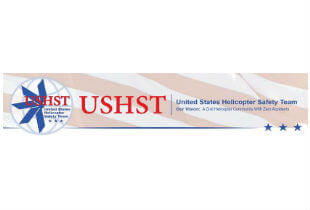The U.S. Helicopter Safety Team has completed its comprehensive analysis of the root causes of fatal accidents and has developed 22 measurable safety enhancements aimed at reducing fatalities.
The 22 safety enhancements can be grouped into four categories:
- IMC and visibility (four safety enhancements)
- Loss of control (five safety enhancements)
- Safety management (seven safety enhancements, with three still in development)
- Competency (Six safety enhancements, with one still in development)
Within the topic of IMC and visibility, the USHST will be working to implement these four safety enhancements. Initial focus will be in these four sectors of the industry: personal/private, air ambulance, commercial, and aerial application.
Detection and management of risk level changes
Action: Develop and promote recommended practices for pilot and nonflying crewmembers to 1) detect increased risk levels during the course of a flight, 2) effectively communicate the increased risk level to each other, and, 3) make a decision on the appropriate risk mitigation.
Threat and error management training
Action: Develop best practices for, and promote the teaching of threat and error management (TEM) as part of initial and recurrent pilot training.
Enhanced helicopter vision systems
Action: Research, develop, and promote the use of enhanced helicopter vision systems (EHVS) technologies (e.g. night vision goggles, enhanced vision systems, synthetic vision systems, combined vision systems, etc.) to assist in recognizing and preventing unplanned flight into degraded visibility conditions due to weather and to increase safety during planned flight at night.
Recognition & recovery of spatial disorientation
Action: Develop training for recognition of spatial disorientation and recovery to controlled flight. Emphasize the use of all available resources installed on the aircraft, including automation such as increased use of autopilot.
The USHST will be announcing the remaining proposed safety enhancements in the coming weeks.
From 2016 through 2019, the USHST is focusing major attention on reducing fatal accidents within the U.S. civil helicopter community. The industry-government partnership is targeting a reduction by 2019 to 0.61 fatal accidents per 100,000 flight hours. The fatal accident rate goal for 2017 is 0.69 or lower. Initial figures for the first six months of 2016 show an actual rate of 0.58 fatal accidents per 100,000 flight hours.









